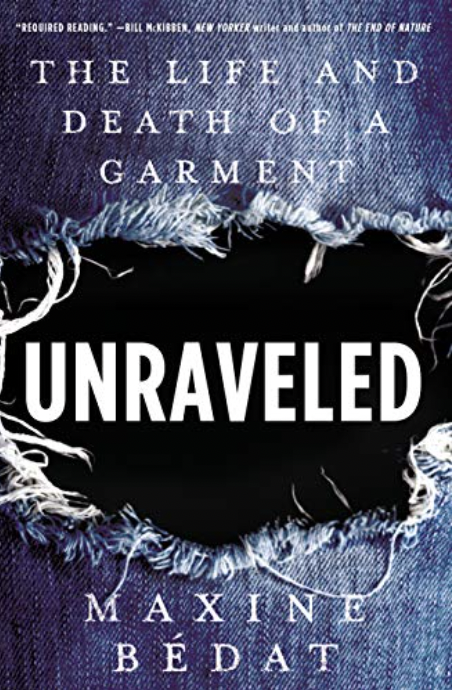
Jeans and fashion’s greed for cheap clothes


This is the story of jeans from cotton plant nested in the soil to the flares hanging in your wardrobes.
A revealing book about the birth and death of jeans that exposes the fractures of our global supply chains, and our relationships to each other, ourselves and the planet.
Did you buy your jeans on Amazon or the Gap, may be the tag says “Made in Bangladesh” or Made in Sri Lanka”, but are you sure where they came from, and it has travelled how many thousands of miles or the number of hands who picked, spun, wove, dyed, packaged, shipped and sold them to get to you?
Jeans the sturdy cloth made with a cotton wrap and wool weft also known as Virginia, invented by Jacob W Davis in partnership with Levi Strauss & Co on 1871 and patented by Jacob W Davis ad Levi Strauss on May 20, 1873. Jeans became common among various youth subcultures and subsequently young members of the general population,
Dungaree was mentioned for the first time in the 17th century when it was referred to as cheap, coarse thick cotton cloth, often coloured in blue but sometimes white worn by impoverished people in what was then a region of Bombay, Western India, a dockside village called Dongri. The cloth was Dungri in Hindi exported to England and used for manufacturing of cheap robust working clothes .
The fashion industry is guilty of countless environmental and labour abuses and epitomises the ravages inherent in the global economy, and all the name of ensuring that we keep buying more while thinking less about its real cost.
Maxine Bedat, founder of New Standard Institute in 2019, a researcher, entrepreneur and advocate follows the life of an American icon – a pair of jeans- to reveal what really happens to give us our clothes and says “ It’s not that I set out to connect the dots, but one does begin to see how these things are connected”. New York City helped develop modern-day labour protections in the wake of the Triangle Shirtwaist Fire, or the way the history of cotton production was intertwined with the history of slavery in America.
We visit Texas cotton farm figuring out how to thrive without relying on fertilizers that poison the earth. Inside dyeing and weaving factories in China, where chemicals that are banned in the West slosh on factory floors and drain into waterways used to irrigate local family farms.
Factory mills and sewing floors in Sri Lanka and Bangladesh are crammed with woman and even children working for illegally low wages to produce garments more efficiently as machines. Back in America, our jeans gets stowed, picked and shipped out by Amazon warehouse workers pressed to be as quick as the robots primed to replace them. Those jeans we have to get sent to landfills – or if they’ve been “donated’ shipped back around the world to Africa, where they’re sold for pennies in secondhand markets or buried in mountains of garbage.
Unraveled is a story of our global economy and role in it, explained with piercing insight and unprecedented reporting.
As people are striving for clothing, summer sales at Swedish fashion purveyor H&M unearths a sleeveless dress in white cotton for £3, a pair of trousers cut from viscose-polyamide mix for £9, or PrimeMark a white dress for £5.
Boohoo.com based in Manchester , sells bandeau tops and white cotton T-shirt with 70 per cent discount tempt you to buy that T-shirt, even if you really did not like it, toss it after wearing couple of times for £2, less than the price of a cup of coffee.
In Unraveled: The Life and Death of a Garment Maxine Bedat explains the consequences to be paid for these small-minded purchases and the fashion’s abuses which are well documented.
In the first fifteen years of this century global garment production is estimated to have doubled to 150 bn items per year, compared the global population of 7.9 bn. The toll of our cheap fashion thrills are paid mostly by women who work 12 to 14 hours. days on gruelling assembly line making less than minimum wage in Dakha in Bangladesh. Sinus clogging rivers where Chinese factories allegedly dump their chemical waste and which in turn dangerously feed local crops. It is paid in early cancers of pesticide spraying farmers in Texas who unload their cotton in opaque exchanges before it is shipped halfway around the world, to be spun, woven and saturated with industrial chemicals and it is also paid out in our accelerating climate emergency of which fashion with its relentless demand for raw materials and energy to power its factories.
Maxine Bedat exposes the fashion industries greed for ever-lower prices and higher profits, and the recklessness, dirty and inhumane face of fashion.
Bedat discovers half a century of spraying fertilizers and chemicals has done to the soil and to the farmer’s health who are still not prepared to change to organic as it is too costly.
Bedat then travels to China and sees why manufacturing jeans there costs only a fifth of the price it does in El Paso, Texas once the denim capital of the world- low wages, poor environmental and worker protection.
In Bangladesh and Sri Lanka she meets Seamstresses who tell in factories, some of whom also coerced into sex work when there are not enough garments to sew.
Bedat observes the robot-like way in American warehouse workers must operate in Amazon, now the US’s largest clothing retailer.
Neoliberalism, labour unions, Western trade policies designed to protect domestic manufacturers that in fact has the opposite effect and fashion brands shift away from making their own clothes to merely curating and selling them.
The sewing women living in shanties in Bangladesh and Sri Lanka profess no hope for themselves and their children.
Unraveled: Life and Death Of a Garment by Maxine Bedat, Portfolio, £22.99/$27, 272 pages.
